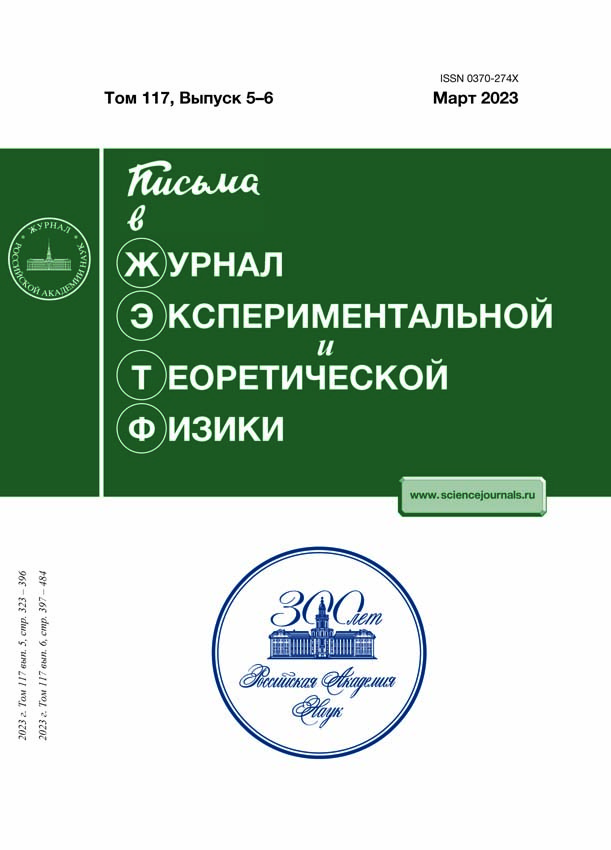Liquid–Crystal Structure Inheritance in Machine Learning Potentials for Network-Forming Systems
- Autores: Balyakin I.A1,2, Ryl'tsev R.E2, Shchelkachev N.M2,3
-
Afiliações:
- Research and Education Center Nanomaterials and Nanotechnologies, Ural Federal University
- Institute of Metallurgy, Ural Branch, Russian Academy of Sciences
- Institute for High Pressure Physics, Russian Academy of Sciences
- Edição: Volume 117, Nº 5-6 (3) (2023)
- Páginas: 377-384
- Seção: Articles
- URL: https://cardiosomatics.ru/0370-274X/article/view/662535
- DOI: https://doi.org/10.31857/S1234567823050099
- EDN: https://elibrary.ru/PYBAYM
- ID: 662535
Citar
Texto integral
Resumo
It has been studied whether machine learning interatomic potentials parameterized with only disordered configurations corresponding to liquid can describe the properties of crystalline phases and predict their structure. The study has been performed for a network-forming system SiO2, which has numerous polymorphic phases significantly different in structure and density. Using only high-temperature disordered configurations, a machine learning interatomic potential based on artificial neural networks (DeePMD model) has been parameterized. The potential reproduces well ab initio dependences of the energy on the volume and the vibrational density of states for all considered tetra- and octahedral crystalline phases of SiO2. Furthermore, the combination of the evolutionary algorithm and the developed DeePMD potential has made it possible to reproduce the really observed crystalline structures of SiO2. Such a good liquid–crystal portability of the machine learning interatomic potential opens prospects for the simulation of the structure and properties of new systems for which experimental information on crystalline phases is absent.
Sobre autores
I. Balyakin
Research and Education Center Nanomaterials and Nanotechnologies, Ural Federal University; Institute of Metallurgy, Ural Branch, Russian Academy of Sciences
Email: i.a.balyakin@gmail.com
620002, Yekaterinburg, Russia; 620016, Yekaterinburg, Russia
R. Ryl'tsev
Institute of Metallurgy, Ural Branch, Russian Academy of Sciences
Email: rrylcev@mail.ru
620016, Yekaterinburg, Russia
N. Shchelkachev
Institute of Metallurgy, Ural Branch, Russian Academy of Sciences; Institute for High Pressure Physics, Russian Academy of Sciences
Autor responsável pela correspondência
Email: n.chtchelkatchev@gmail.com
620016, Yekaterinburg, Russia; 108840, Troitsk, Moscow, Russia
Bibliografia
- Y. Mishin, Acta Mater. 214, 116980 (2021).
- T. Wen, L. Zhang, H. Wang, E. Weinan, and D. J. Srolovitz, Materials Futures 1, 022601 (2022).
- V. L. Deringer, M. A. Caro, and G. Cs'anyi, Adv. Mater. 31, 1902765 (2019).
- F. Ercolessi and J. B. Adams, Europhys. Lett. 26, 583 (1994).
- P. Brommer, A. Kiselev, D. Schopf, P. Beck, J. Roth, and H. R. Trebin, Model. Simul. Mat. Sci. Eng. 23, 074002 (2015).
- С. В. Стариков, В. В. Стегайлов, Г. Э. Норман et al. (Collaboration), Письма в ЖЭТФ 93, 719 (2011).
- Г. Э. Норман, С. В. Стариков, В. В. Стегайлов, ЖЭТФ 141, 9102012 (2012).
- D. Marchand, A. Jain, A. Glensk, and W. A. Curtin, Phys. Rev. Materials 4, 103601 (2020).
- R. E. Ryltsev and N. M. Chtchelkatchev, J. Mol. Liq. 349, 118181 (2022).
- I. A. Balyakin, S. V. Rempel, R. E. Ryltsev, and A. A. Rempel, Phys. Rev. E. 102, 052125 (2020).
- E. Oren, D. Kartoon, and G. Makov, J. Chem. Phys. 157, 014502 (2022).
- B. Monserrat, J. G. Brandenburg, E. A. Engel, and B. Cheng, Nat.Commun. 11, 1 (2020).
- C. Hong, J. M. Choi, W. Jeong, S. Kang, S. Ju, K. Lee, J. Jung, Y. Youn, and S. Han, Phys. Rev. B 102, 224104 (2020).
- W. Li and Y. Ando, Phys. Chem. Chem. Phys. 20, 30006 (2018).
- L. C. Erhard, J. Rohrer, K. Albe, and V. L. Deringer, npj Computational Materials 8, 1 (2022).
- J. You, C. Wang, S. L. Shang, Y. Gao, H. Ju, H. Ning, Y. Wang, H.-Y. Wang, and Z. K. Liu, 10.1016/j.jma.2021.11.024.
- R. E. Ryltsev and N. M. Chtchelkatchev, J. Phys.: Condens. Matter 34, 404002 (2022).
- V. A. Levashov, R. E. Ryltsev, and N. M. Chtchelkatchev, Physica A 585, 126387 (2022).
- L. V. Kamaeva, R. E. Ryltsev, V. I. Lad'yanov, and N. M. Chtchelkatchev, J. Mol. Liq. 299, 112207 (2020).
- H. Wang, L. Zhang, and J. Han, Comput. Phys.Commun. 228, 178 (2018).
- E. V. Podryabinki and A. V. Shapeev, Comput. Mater. Sci. 140, 171 (2017).
- Y. Zhang, H. Wang, W. Chen, J. Zeng, L. Zhang, H. Wang, and E. Weinan, Comput. Phys.Commun. 253, 107206 (2020).
- A. P. Thompson, H. M. Aktulga, R. Berger, D. S. Bolintineanu, W. M. Brown, P. S. Crozier, P. J. in 't Veld, A. Kohlmeyer, S. G. Moore, T. D. Nguyen, R. Shan, M. J. Stevens, J. Tranchida, C. Trott, and S. J. Plimpton, Comput. Phys.Commun. 271, 108171 (2022).
- G. Kresse and J. Furthmuller, Phys. Rev. B 54, 11169 (1996).
- G. Kresse and D. Joubert, Phys. Rev. B 59, 1758 (1999)
- A. R. Oganov and C. W. Glass, J. Chem. Phys. 124, 244704 (2006).
- A. R. Oganov, A. O. Lyakhov, and M. Valle, Acc. Chem. Res. 44, 227 (2011).
- A. O. Lyakhov, A. R. Oganov, H. T. Stokes, AND Q. Zhu, Comput. Phys.Commun. 184, 1172 (2013).
- A. Lahti, R. O¨ stermark, and K. Kokko, Comput. Mater. Sci., 210, 111011 (2022).
Arquivos suplementares










